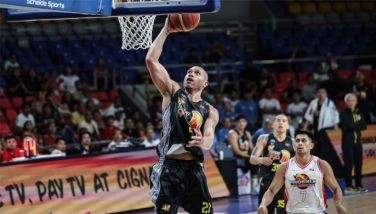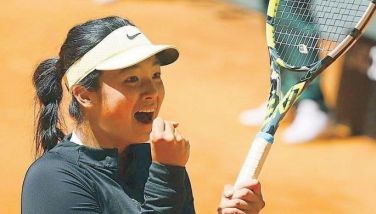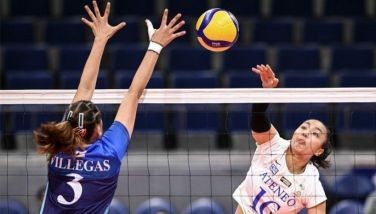Football’s promise
Finally, the book “Philippine Football: Its Past, Its Future” is out on the market. It is a thorough, detailed, passionate look at how the world’s favorite game was once a treasured part of Filipino lives, and is gradually regaining the luster it once held in the country. Edited by renowned economist and professor Bernardo Villegas, Ph. D. of the University of Asia and the Pacific, it is the story of how intrepid men of earlier times helped the sport gain prominence, how it was eventually eclipsed by basketball, and details its return to prominence, particularly since 2010. With a foreword from Philippine Football Federation president Mariano Araneta Jr., the tome’s formidable line-up of contributors include Bong Pedralvez, Rick Olivares, Bert Ramirez, Ignacio Dee, this writer and of course, Villegas himself.
The project was two years of data gathering, research, collecting, collating and curating of old photos, updating, and interviews with the players, coaches and officials who sculpted football’s early years until its peak in the 1950’s. The country’s most prestigious colleges and universities had their own rivalries that fired up the imagination of spectators and developed traditions that have since been seen in other sports. Inevitably though, the Americans’ infiltration of the educational system, victory in the Liberation in World War II and penetration of Filipino culture propelled basketball into greater prominence. But Villegas says there is also an economic reason why soccer is now on people’s minds.
“We are seeing the emergence of the middle class,” Villegas said at the book’s formal launch Thursday. “The middle class has already grown to the point that there is a lot more disposable income, and thus more income for leisure. If you organize a marathon, people will come. And of course, the influence of the Azkals cannot be discounted.”
Football’s renaissance can be directly traced to the Suzuki Cup in 2010, which broadcast network ABS-CBN gambled on broadcasting, making the critical decision only the day before, that opened window for national team football to the rest of the world. Of course, it likewise helped that many of the national men’s players were good-looking Filipino-foreign athletes, ironically feeding on the Filipino love for anything foreign or Caucasian instilled by the Americans. Though the use of hybrid players is controversial, Villegas believes they are still a necessary component to the sport’s further growth.
“We should keep on hiring these mestizo players, by virtue of the law of jus sanguinis. They are entitled to the citizenship of either parent,” Dr. Villegas elaborates. “Besides, they bring with them the competitive training from Europe and other parts of the world. Their contribution is valuable.”
Villegas is also encouraged by the imminent launch of a regional football league which will feature eight teams, four from the National Capital Region, and four from the Visayas and Mindanao. He says it is a sign that advertisers see the value of the games, and that the audience has embraced not just the Azkals, but the game itself. But all the book’s writers agree that the first generations of Azkals are merely laying the groundwork. The fruit of their labor as pioneers is the bigger audience, higher ratings, growing revenue, new sponsors, better facilities and higher standard they will be passing on to their younger counterparts.
“Our hope is really with the youth,” Villegas declared. “They are the future of the sport. I’m glad that there are many private sector initiatives and local governments like Biñan that have vested in a new stadium to use football as a focal point of community activity.”
Of course, all of this is in the hope that the proud history of Philippine football reaches a new audience, and that translates to a greater appreciation of the beautiful game. With the changes in FIFA’s format worldwide, the Philippines is hoping that, in this lifetime, the country will see a spot in the World Cup qualifiers. Araneta himself is hoping to turn his good relations with FIFA’s new administration into political capital and make the leap onto important policy-making FIFA committees, something no Filipino officials has ever done.
Though football’s growth may be gradual, it is steady, with palpable interest from the public and therefore, advertisers. This makes it a bigger responsibility for succeeding players to honor the sacrifice and commitment of their forebears and add their own police on the new face that Philippine football is showing the country.
- Latest
- Trending































